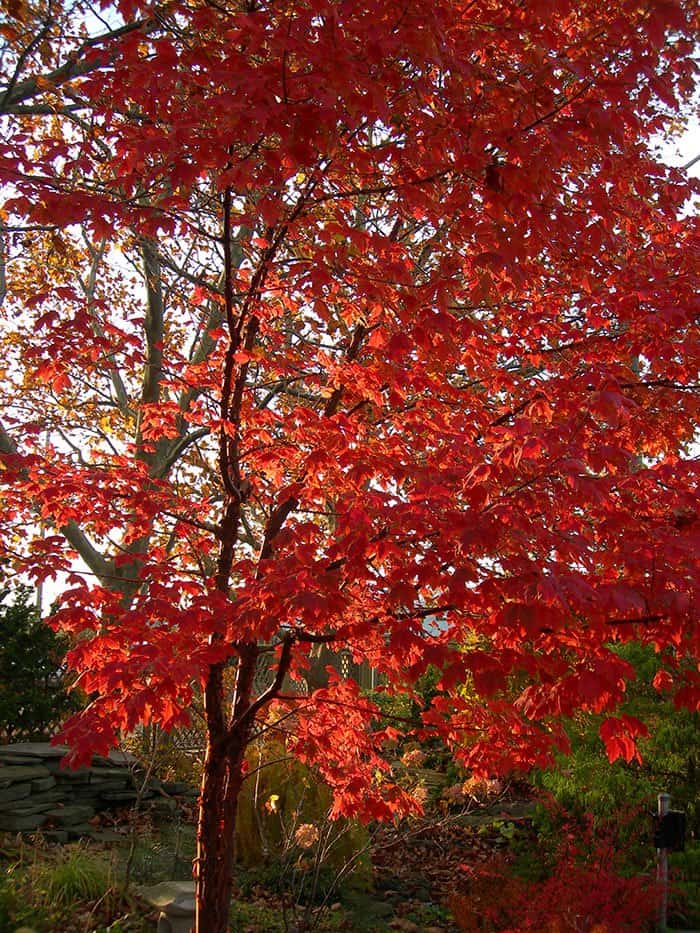
Before putting spade to soil, have all underground utilities located on the site and be aware of any in-ground irrigation nearby. Here are eight basic steps to follow to successfully plant a new tree in your garden:
- Dig a shallow planting hole — only as deep as the root ball — and at least three times as wide as the root ball.
- Find the trunk flare, the area at the base of the trunk where it widens and connects with the roots. If the flare isn’t visible, remove some of the soil from the top of the root ball until it’s exposed.
- Measure the depth of the hole to make sure the bottom of the root ball sits on firm soil and the trunk flare is at soil level, not below grade. It’s better to have the base of the trunk flare an inch or two (2.5 to 5 cm) above soil level than have it below soil level. See article: Plant a tree at the right depth
- Before beginning to backfill, stand back to look at the tree from all sides to make sure it’s straight.
- Backfill halfway with soil you’ve excavated when digging the hole. There’s no need to add soil amendments or fertilizer. Firmly pack the soil around the root ball to eliminate air pockets, using your hands, not your feet. Add a pail of water to saturate the soil. Add the remainder of the soil, packing it and adding water to avoid air pockets, until the hole is filled, and the trunk flare is at soil level.
- Well-grown, well-planted trees usually don’t require staking. However, if wind or human interference (lawn mowers, vandalism, etc.) is a concern, supportive staking may be necessary. Use two stakes and flexible ties and allow some flexibility for trunk movement. Remove the stakes after one year. Staking for too long delays trunk and root development, making for an unstable tree. Read article: Say no to tree staking
- Add a three- to four-inch (8- to 10-cm) layer of organic mulch, such as shredded leaves or wood chips, around the base of the tree. Leave a generous mulch-free zone at the base of the tree to prevent rot and decay of the bark. No mulch volcanoes, please.
- Water newly planted trees at least once a week and more often during hot weather. A slow trickle from the end of a hose placed a few inches away from the trunk for an hour or two is one way to water. Or slowly pour two or three pails of water around the base of the tree to keep the soil moist. Your aim is to moisten the entire root ball; not just the top few inches of soil. If you’re unsure if your tree needs water, pull away a section of the mulch and feel the soil; if it’s dry, it’s time to irrigate.
More on tree planting

Leave a Reply